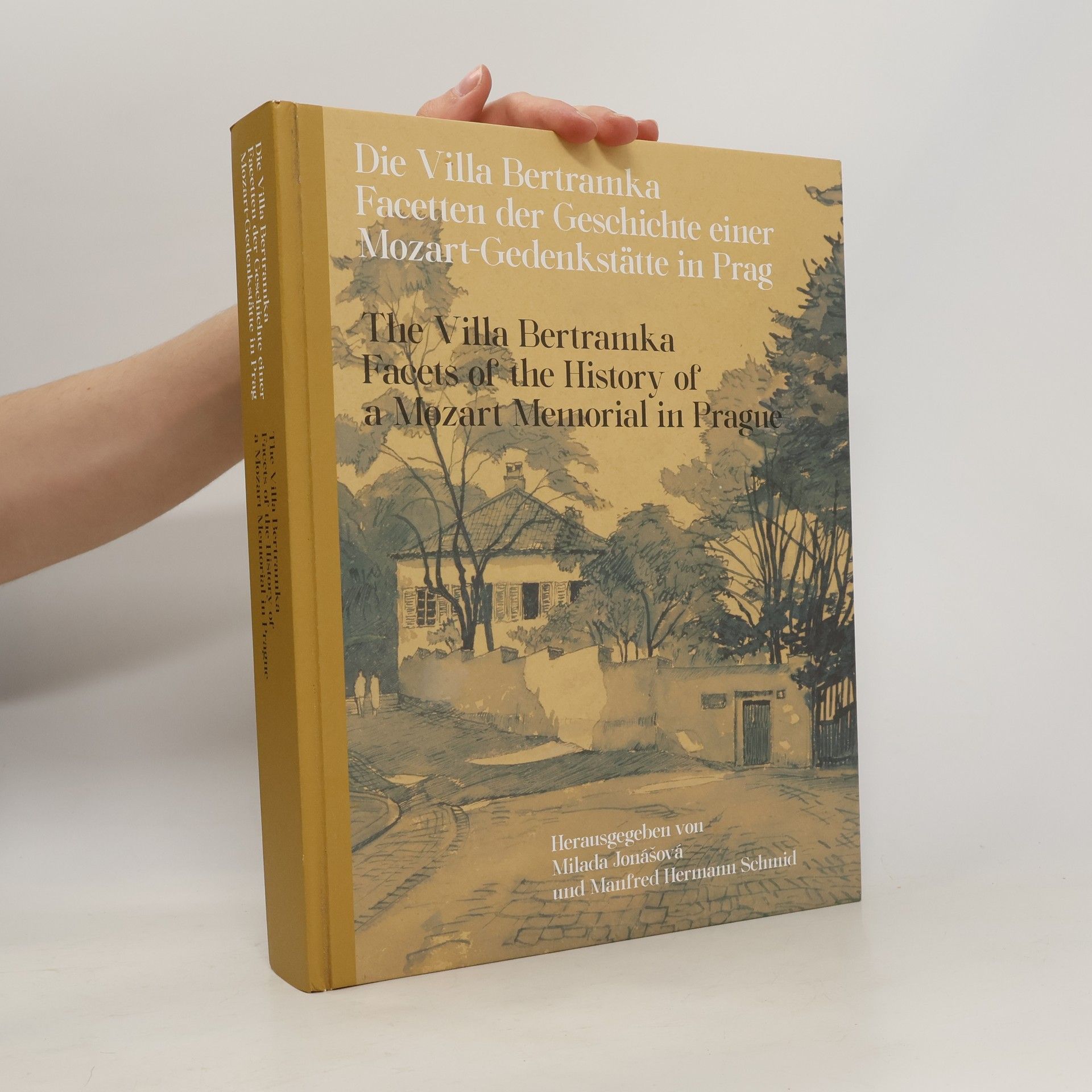Die Villa Bertramka.The Villa Bertramka.
- 339pages
- 12 heures de lecture
Do pěti oddílů členěná publikace s množstvím obrazových příloh pojednává v nebývalém rozsahu o staletém stavebním vývoji Bertramky, který začal pouhou boudou na vinici. Pražská pěvkyně Josefa Dušková ji 1783 koupila už jako patrovou letní rezidenci s představeným schodištěm, jakož i se stájemi pro hospodářský dobytek. V 19. století v ní na základě zcela ahistorických představ došlo ke zřízení dvou „Mozartových pokojů“. K navýšení stavby došlo po požáru původní šindelové střechy 1872 a další přestavby byly uskutečněny za 2. světové války, když se protektorátní úřady rozhodly proměnit “Bertramhof” v doklad toho, „jak silně byl prostor Čech a Moravy ovládán německým duchem“. K těmto zásahům objevil potřebnou dokumentaci až v červnu 2018 německý muzikolog prof. M. H. Schmid v pozůstalosti múzického přítele svého otce, architekta Georga Buchnera (1890–1971). Jedná se o dobrou stovku kreseb a stavebních plánů Bertramky z let 1925 a 1941/1942, dochovaných v Muzeu architektury Technické univerzity v Mnichově, Buchner je vytvořil v rámci svého projektu Mozartova a Beethovenova místa v Salcburku, v Praze a Vídni. Spolu s M. Jonášovou z ÚDU AV ČR rozvinul Schmid výzkumný projekt, jehož výstupem se staly – ve spolupráci s Mozartovou obcí v ČR – výstava a jednodenní mezinárodní vědecká konference ve vile Bertramka a všechny tyto aktivity shrnující předkládaná publikace. The publication deals with the small Bertramka estate in the Smíchov district of Prague, highly regarded as an important Mozart memorial site in Prague, and with the long history of its construction. The oldest historical record is of a hut in a vineyard, which during the course of the centuries was gradually transformed into a summer residence. In 1783 it was purchased by the singer Josefa Dušková. In the 19th century, two rooms where the composer was supposed to have stayed were furnished as “Mozart rooms”, but this was on the basis of quite mistaken ideas which did not correspond to the historical facts. A major reconstruction was undertaken after the destruction of the original shingle roof in a fire in 1872. Further extensive building alterations took place during the Second World War, when the Reichsprotektor’s Office decided to make use of the 150th anniversary of the death of the “great German genius Mozart”, which occurred in 1941, to demonstrate “how strongly the region of Bohemia and Moravia was dominated by the German spirit”. Evidence of the difficulties involved in opening an exhibition in the “Bertramhof” on the eve of the anniversary of the world premiere of Don Giovanni (which took place in Prague) on 27 October 1941, has been provided by a newly discovered contemporary film report “on the reconstruction of the Bertramka”. For a long time, virtually no documentation of the building work that took place at that time was known to have existed. It was not until June 2018 that the leading German musicologist Prof Dr Manfred Hermann Schmid (University of Tübingen) made a very valuable discovery, thanks to studying the correspondence between his father, also a musicologist, and the latter’s fellow musician in an amateur quartet, the professor of architecture in Munich Georg Buchner. In the material left by Buchner on his death, preserved in the Museum of Architecture of the Technical University in Munich, Schmid discovered more than 100 hitherto unknown drawings and building plans of the Bertramka from 1925 and 1941/1942. The music lover Buchner created them as part of his long-term project Mozart and Beethoven Sites in Salzburg, Prague, and Vienna, in which he also involved his architecture students. On the basis of this discovery, Schmid launched a research project in cooperation with Milada Jonášová from the Institute of Art History, Czech Academy of Sciences, which was supported by a Strategy AV21 grant. The outcomes of the project were an exhibition held in the Bertramka villa in cooperation with the Mozart Society in the Czech Republic, and a one- day international academic conference on Die Bertramka – ein deutscher Blick (1942), which took place in the Bertramka on the opening day of the exhibition. The results of all these activities are brought together in this book

